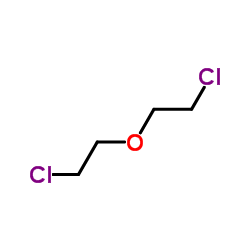Treatment of persistent organic compounds by integrated advanced oxidation processes and sequential batch reactor
Alex Christensen, Mirat D. Gurol, Temesgen Garoma
Index: Water Res. 43(16) , 3910-21, (2009)
Full Text: HTML
Abstract
The objective of this study was to evaluate the extent of improvement in the biodegradability of persistent organic compounds by pre-oxidation by using Sequential Batch Reactors (SBRs). Dichlorodiethyl ether (DCDE), a non-biodegradable compound, was used as a test chemical. Ozonation, Fenton reagent and ultra-violet light coupled with hydrogen peroxide (UV/H 2O 2) were used for oxidation of DCDE at levels of 50–100%. Pre-oxidized DCDE solutions were then subjected to SBR studies using activated sludge to determine the rate and extent of biodegradation of oxidation by-products. The results indicated that the biodegradability of pre-oxidized DCDE increased drastically, reaching an average of 90% for all three oxidation methods versus zero for non-oxidized DCDE. It was concluded that the results of SBR experiments may be better indicators of biodegradability of chemically-oxidized wastewaters due to significant acclimation of microorganisms in SBRs, which cannot be observed in conventional respirometric laboratory studies.
Related Compounds
| Structure | Name/CAS No. | Molecular Formula | Articles |
|---|---|---|---|
 |
Bis(chloroethyl) ether
CAS:111-44-4 |
C4H8Cl2O |
|
Carcinogenicity tests of certain environmental and industria...
1981-07-01 [J. Natl. Cancer Inst. 67(1) , 75-88, (1981)] |
|
Thiodiglycolic acid: a major metabolite of bis(2-chloroethyl...
1979-01-01 [Toxicol. Appl. Pharmacol. 47(1) , 23-34, (1979)] |
|
Bis(2-chloroethyl)ether.
1999-01-01 [IARC Monogr. Eval. Carcinog. Risks Hum. 71 Pt 3 , 1265-9, (1999)] |
|
[Medical topics: bischloromethyl ether and lung cancer].
1985-12-01 [Kango. 37(14) , 82, (1985)] |
|
Chemical mutagenesis testing in Drosophila. IX. Results of 5...
1994-01-01 [Environ. Mol. Mutagen. 23(1) , 51-63, (1994)] |